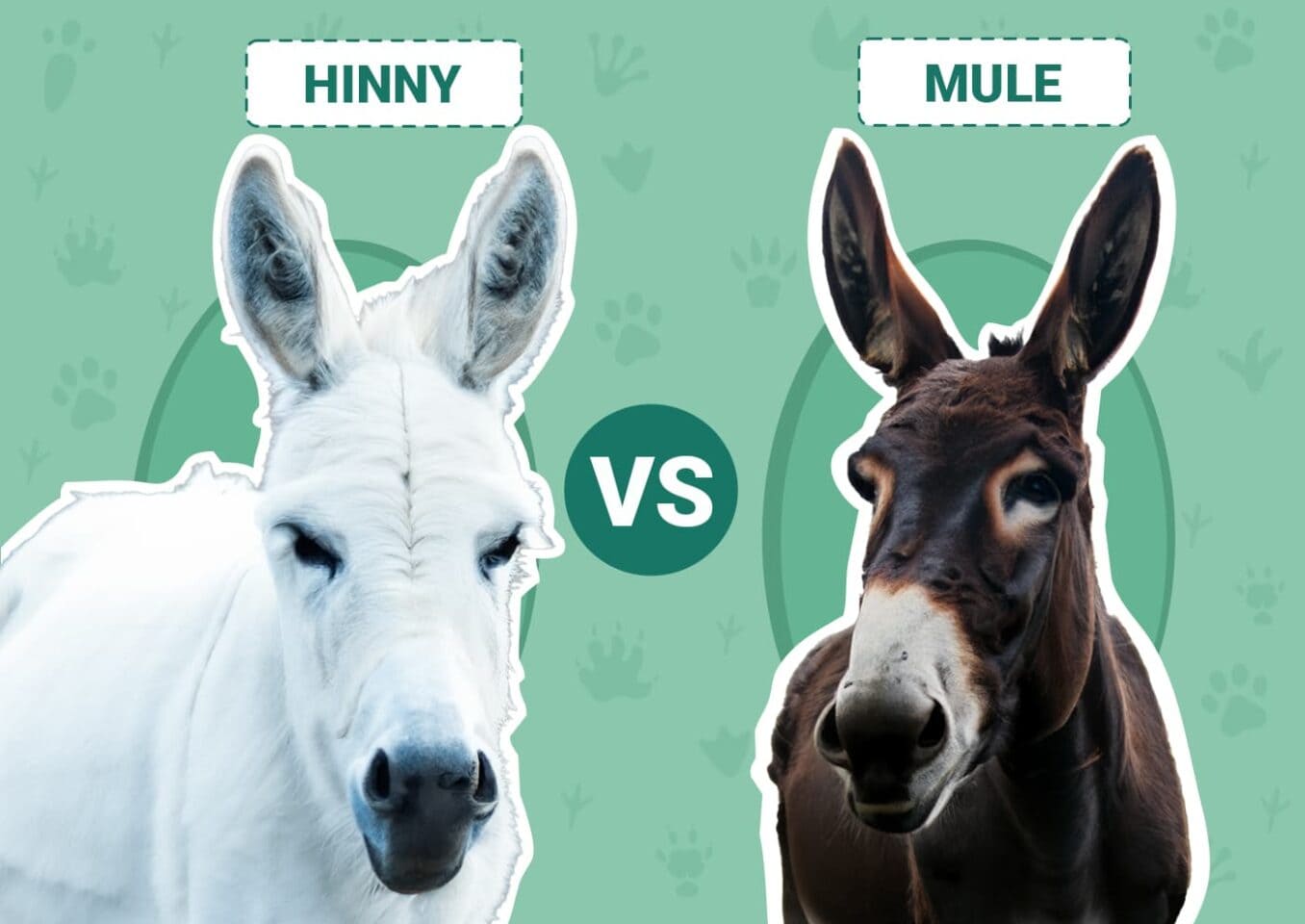Hinnies and mules look similar, so it can be difficult to separate a hinny and mule by appearance alone, as you really need to know what to look for. Even if you do, the differences in appearance are so slight that it can be difficult to be absolutely confident in one direction or the other.
Both the hinny and mule have been widely used for centuries for carrying loads, transport, and agriculture and used in smaller farm work like tilling the land to plant crops. This is due to the animals’ hybrid vigor, a result of crossbreeding that makes them stronger and healthier than their individual parent breeds. Most people use the term “mule” to describe both breeds, but there are subtle differences that are essential to the owners of each animal and what they intend to use them for.
If you’ve ever wondered about the difference between a hinny and a mule, you’ve come to the right place! In this article, we take a look at the main differences and how you can tell the two apart. Let’s get started!

Visual Differences
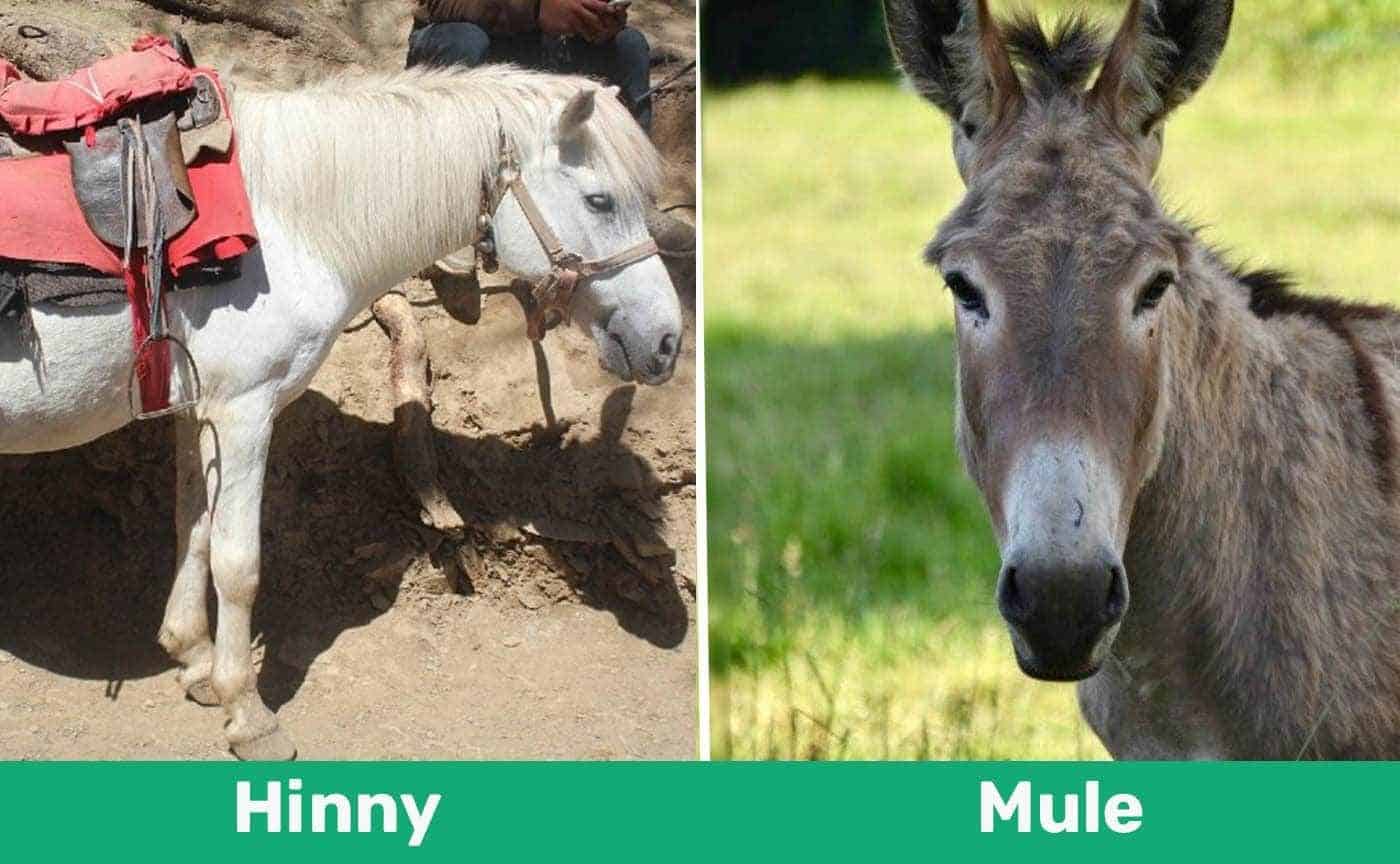
At a Glance
- Average height (adult): 24–50 inches
- Average weight (adult): 300–800 pounds
- Lifespan: 30–40 years
- Grooming needs: Moderate
- Family-friendly: Yes
- Other pet-friendly: Yes
- Trainability: Friendly and fairly easy to train
- Average height (adult): 50–70 inches
- Average weight (adult): 800–1,000 pounds
- Lifespan: 35–40 years
- Grooming needs: Low
- Family-friendly: Yes
- Other pet-friendly: Yes
- Trainability: Intelligent and easy to train

Hinny Overview

The Hinny, like the mule, is a cross between a donkey and a horse but is different from a mule in one important way: A hinny is an offspring of a male horse (stallion) and a female donkey (jenny). Hinnies tend to be smaller and lighter than mules but can vary widely in size because they can be the result of a small (miniature) or large (mammoth donkey) breed of donkey. They will also typically have shorter legs and ears, a thicker mane, and hooves that are similar to those of a donkey.
Personality / Character
Hinnies are calm, slow-moving animals, with a donkey-like temperament and added strength from their horse genetics. They are also known to be quieter and calmer animals than mules, as well as less adventurous or curious. They are thus an easier animal to control than a mule. Because they come from a jenny, they are usually raised among donkeys, and this also has a large part to play in their character and temperament.
They are known to be more agile than mules and more adept at handling tricky, rocky terrain, with a powerful endurance that is far greater than that of mules, leading them to be favored in rural areas. Lastly, hinnies are also far less fussy about food than mules, making them more suited for environments where there may be less vegetation.
Training
Both hinnies and mules have a reputation of being difficult to train, but they are highly intelligent animals that with the right techniques, are actually fairly simple to train. Hinnies are generally less challenging than mules, as they do not have the same independent nature. The most important factor to consider when training hinnies is that they will not respond to the same techniques that you’d use with a horse, but with consistency, respect, and kindness, they can be trained in no time.
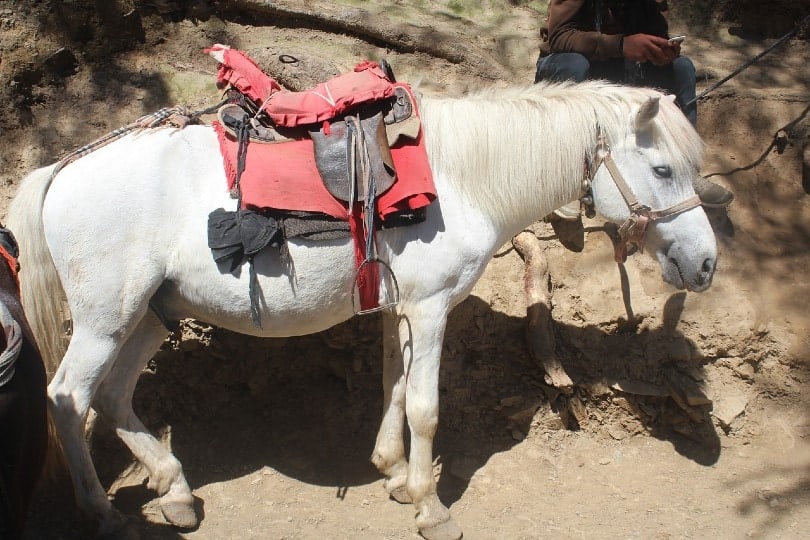
Health & Care
Both hinnies and mules benefit from hybrid vigor and are usually far healthier and longer-lived than their parent breeds. Hinnies can live well over 30 years, longer than most donkey and horse breeds. They are not fussy eaters, making them easy to feed, and they require little maintenance overall. Hinnies have strong hooves and careful, thoughtful footing, making them less susceptible to injury than mules and horses.
Breeding
It’s a well-known fact that both hinnies and mules are sterile, but this is not always the case. There have been recorded cases of hinnies giving birth, and while it’s unlikely, it is possible for them to have their own offspring.
Suitability
Most hinnies are born by accident, as it can be more difficult for a jenny to conceive and give birth than a female horse (mare). Although they are less popular and far smaller in population than mules, they are still useful animals that are employed for a variety of tasks. They are common pack animals in rural areas where there is harsh terrain and food is scarce, and they generally have more endurance than mules. Because of their small size, they are also commonly kept as docile and lovable pets.

Mule Overview
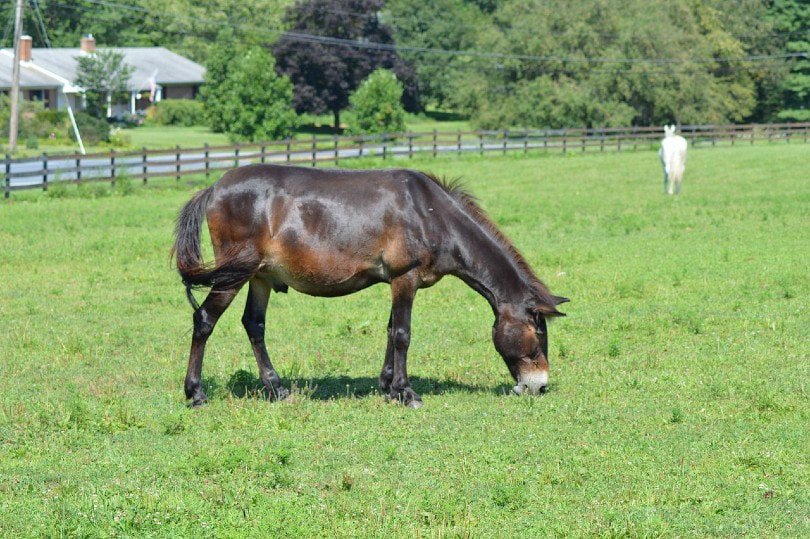
A mule is also a donkey and horse crossbreed, but they are the result of a male donkey (jack) and a female horse (mare). Because they have a horse mother, mules are often larger and heavier than hinnies, said to have the bodies of a horse with the extremities of a donkey. Mules generally have long ears, a thin and short mane, and a short yet still horse-like tail. They have hooves that are similar to a horse, smaller and straighter than those of a hinny, making them less sure-footed and stable.
Personality / Character
Mules are known for their strength, stamina, and agility, but they also have a reputation for being stubborn at times. They are intelligent animals, and although they can be independently minded at times, they are also kind and gentle animals, usually inheriting their patience and kindness from donkeys. They are typically docile creatures but are known to kick when threatened or angry, and they can kick backward and to the side!
Training
Mules have a reputation for being stubborn, and although this is true in certain respects, it comes more from the mule’s desire for self-preservation; they are sensible animals that will simply refuse to comply with commands that they perceive to put them in danger. In general, they have a natural affinity toward humans, and when handled with care, patience, and kindness, they are actually easy to train.
Health & Care
Like hinnies, mules benefit from hybrid vigor and are healthy and hardy animals overall. They often outlive both horses and donkeys, and some have been recorded living for 40 years or more. They are far more resistant to disease and parasites and have more stamina and endurance capability than horses or donkeys. Of course, they need to be properly taken care of, and their hooves are not as strong or agile as those of a hinny or donkey, making them more susceptible to injury.
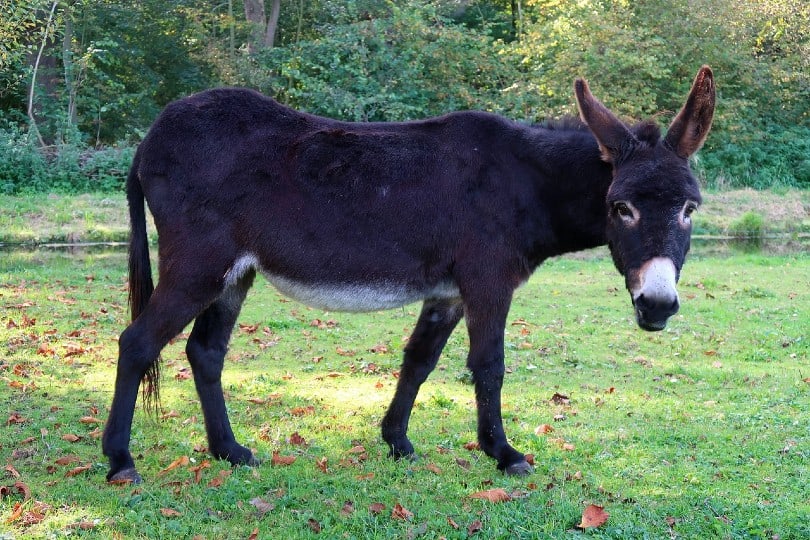
Breeding
As with hinnies, mules are sterile most of the time, although there have been documented cases of them breeding. While it is rare and highly unlikely, it is possible for mules to have offspring.
Suitability
Mules are hardy, strong, and tough animals that have been used as pack animals for centuries. They are ideal animals to have on farms and smallholdings for agricultural work or draft work, and their docile friendly nature makes them great pets. These animals are commonly used for riding events too, such as dressage, showjumping, and endurance, and they are highly suited for driving.

Final Thoughts
Mules and hinnies have far more in common than they differ on, and as such, it can be difficult to tell the two apart at times. The main difference is in the parent breeds, and whether they were born from a donkey or horse mother. Hinnies (born from a jenny) are generally smaller, more docile, and hardier and are better equipped to live in harsh environments. Mules (born from mares) are larger, stronger, and far more common than hinnies, and they have been used for basic farm work and transport for hundreds of years.
Featured Image Credit by: (T) Sirisak_baokaew, Shutterstock, (B) Pixabay
